| Columns Retired Columns & Blogs |
John you got the same measurements I did when I measured it last year which is good.
I have said this is the best DAC I have heard.
I measured the Okto dac8 Stereo with my Audio Precision SYS2722 system (see the January 2008 "As We See It"). Apple's USB Prober utility identified the Okto as "dac8STEREO" from "OKTO RESEARCH" with the serial number string "000000." The USB port operated in the optimal isochronous asynchronous mode, and Apple's AudioMIDI utility revealed that the dac8 Stereo accepted 16- and 24-bit integer data sampled at all rates from 44.1kHz to 384kHz. The AES/EBU and coaxial S/ PDIF inputs accepted data sampled at rates up to 192kHz. The TosLink inputs were limited to sample rates of 96kHz and below.
The dac8 Stereo's maximum output level at 1kHz with the balanced outputs or the headphone outputs feeding a high 100k ohm load was 4.22V. The processor preserved absolute polarity (ie, was noninverting) from all its outputs. The balanced output impedance was the specified 50 ohms at all audio frequencies. Although the front-panel headphone jack's output impedance is specified as <0.1 ohm, I measured 8 ohms. Even so, the dac8 Stereo should have no problem driving low-impedance headphones.
As mentioned in the subjective part of the review, the dac8 Stereo offers a choice of seven FIR (finite impulse response) reconstruction filters for PCM data, labeled FRLP, SRLP, FRMP, SRMP, AFRLP, HFRMP, and BW (see the main text for what acronyms stand for). Fig.1 shows the AFRLP filter's impulse response with 44.1kHz data. It is typical of a conventional linear-phase filter with symmetrical ringing before and after the single full-scale sample. The impulse responses of the BW and FRLP filters were identical, while the SRLP filter had a much shorter impulse response (fig.2). The FRMP filter's impulse response (fig.3) offered a classic minimum-phase response, with all the ringing following the single high sample. The SRMP filter had less post-ringing than FRMP (fig.4), while the HFRMP's impulse response introduced a small amount of preringing (fig.5).
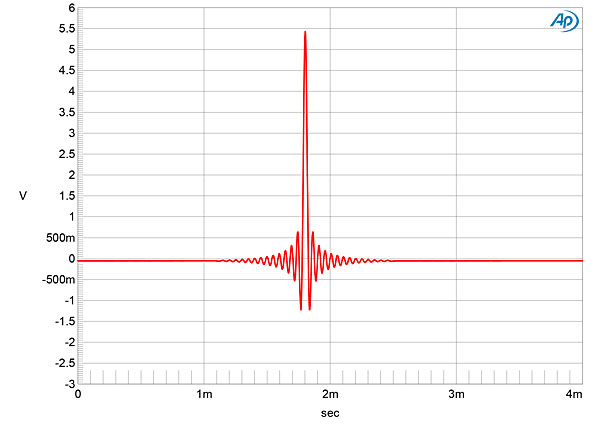


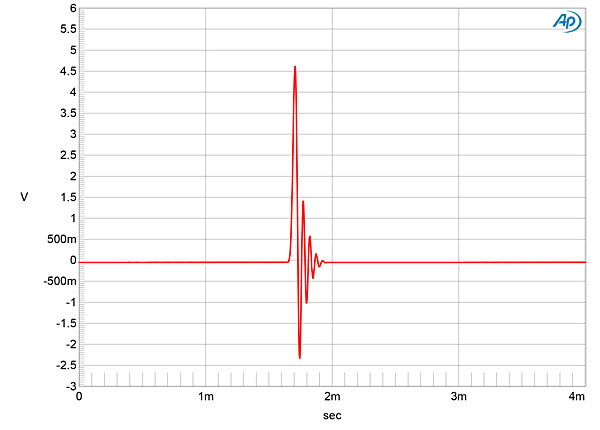
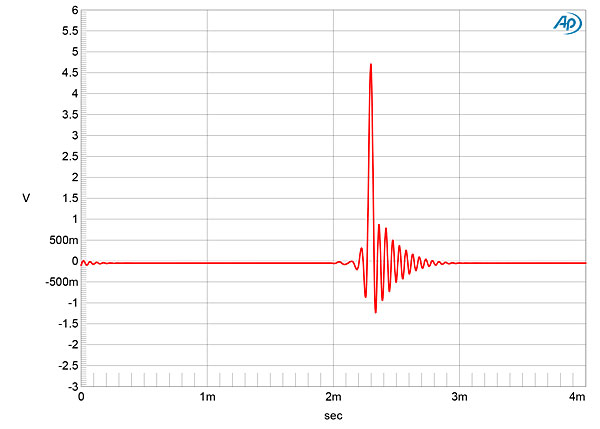
The AFRLP filter's ultrasonic rolloff with 44.1kHz data (fig.6, magenta and red traces) confirms that it is an apodizing filter, as it reaches full stop-band attenuation at half the sample rate, shown by the vertical green line. The aliased image at 25kHz of a full-scale tone at 19.1kHz (cyan, blue) is suppressed by more than 100dB, though a higher-level, higher-order image can be seen at 69.1kHz (88.2–19.1kHz). The harmonics associated with the 19.1kHz tone are all very low in level. The BW and HFRMP filters behaved identically to the AFRLP filter except that the aliased image at 69.1kHz was absent (fig.7). Stop-band attenuation with the FRLP and FRMP filters was close to 24kHz, with no aliased images present, while the slower ultrasonic rolloff of the SRLP and SRMP filters allowed the image at 25kHz of the 19.1kHz tone to be readily seen (fig.8).
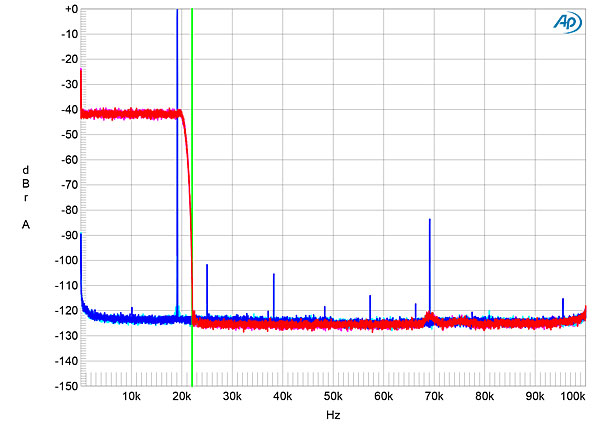
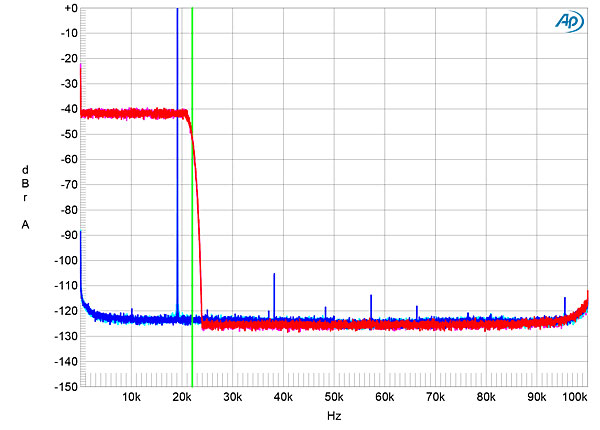
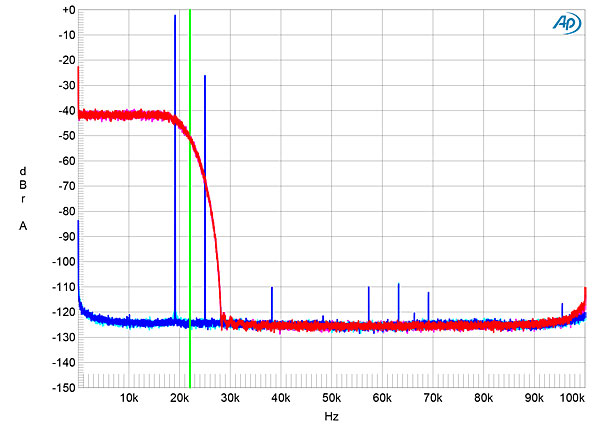
Fig.9 compares the responses in the octave from 15kHz to 30kHz of the AFRLP, FRLP, and SRLP filters. The first two are flat up to 20kHz; the third starts to roll off above 17kHz, reaching –3dB at 20kHz. The HFRMP filter also starts rolling off early with 44.1kHz data (fig.10, green and gray traces), and some passband ripple can be seen with data sampled at 44.1, 96, and 192kHz. Some ripple was also present with the AFRLP filter but was absent with the other filters. Channel separation was superb, at >122dB in both directions below 3kHz, decreasing to a still superb 113dB at 20kHz.
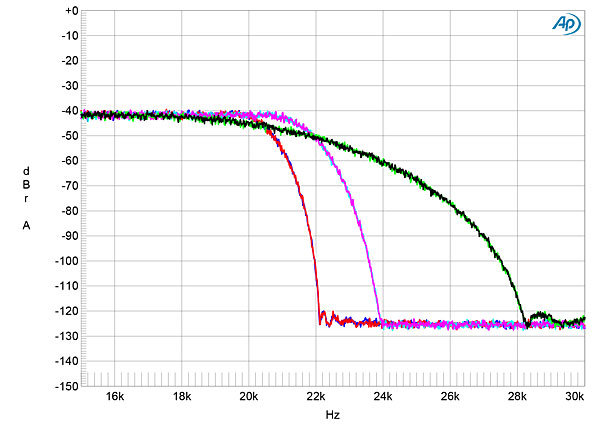
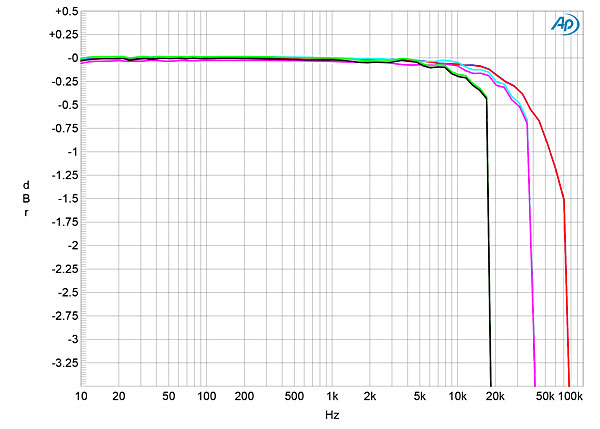
The DAC Stereo's noise floor was free from any power supply–related spuriae (fig.11). In fact, the noise floor with a full-scale 24-bit tone in this graph (blue and red traces) is actually that of the analyzer. Repeating the spectral analysis with 24-bit "digital black" data (cyan, magenta) revealed that the actual noise floor lay close to –160dBFS. An increase in bit depth from 16 to 24, with dithered data representing a 1kHz tone at –90dBFS, therefore dropped the dac8 Stereo's noise floor by 30dB (fig.12). This implies a resolution of 21 bits, which is both one of the highest I have encountered and equals that of the MBL N31 I reviewed in February 2018, the Weiss DAC502 I reviewed in August 2020, and the HoloAudio May I reviewed in September 2020.
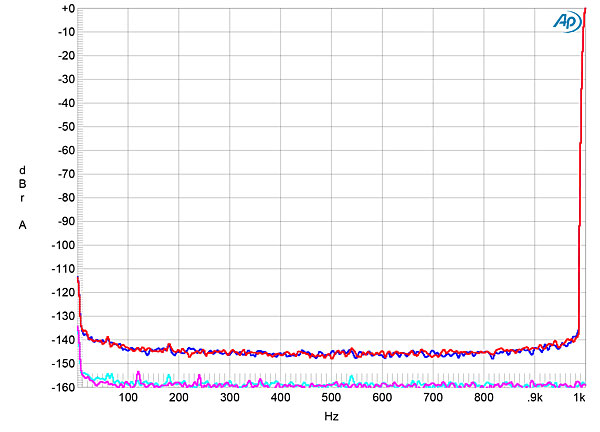
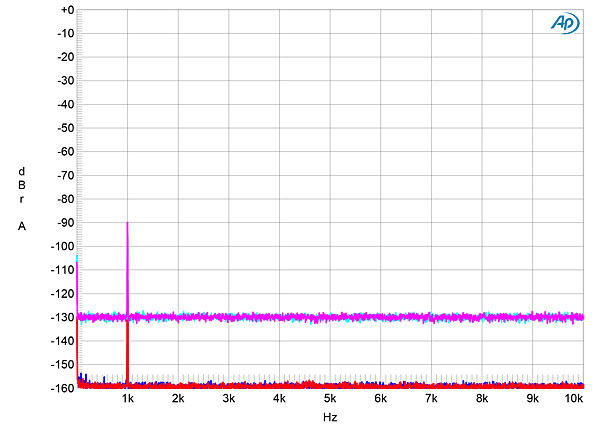
The Okto DAC's linearity error was negligible to below –130dBFS (fig.13), and when I played undithered data representing a tone at exactly –90.31dBFS, the waveform was symmetrical, with negligible DC offset and the three DC voltage levels described by the data free from noise (fig.14). With undithered 24-bit data (fig.15), the dac8 Stereo's very low analog noise floor means it can output a clean sinewave, even at this very low signal level.
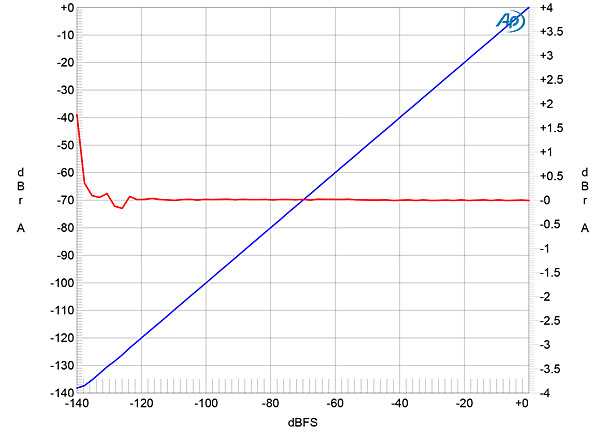
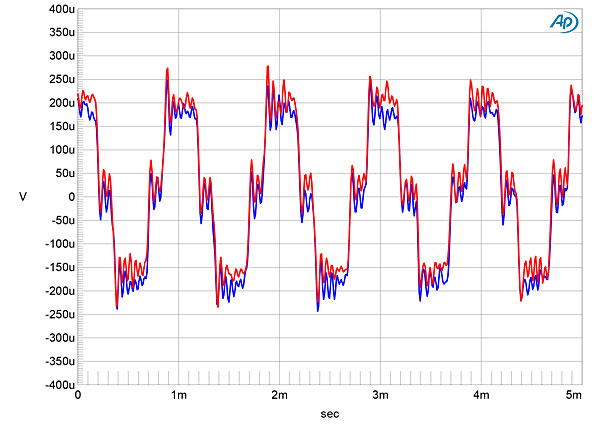
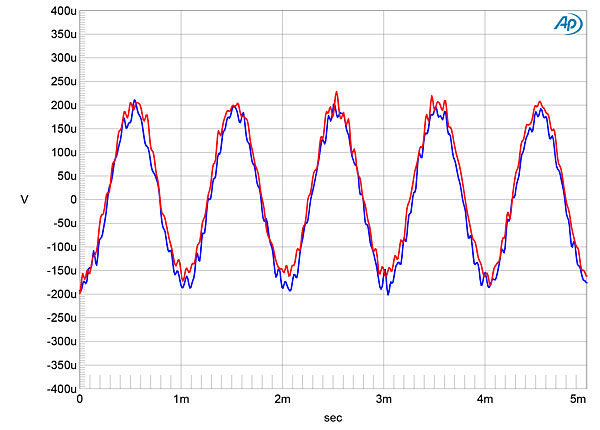
The dac8 Stereo produced very low levels of harmonic distortion with full-scale data, challenging the resolution of my SYS222 analyzer. I therefore used the magazine's sample of Audio Precision's higher-performance APx555. The result is shown in fig.16. The third harmonic is the highest in level at just –120dB (0.0001%), with the second harmonic lying at –130dB (0.00003%) and some higher-order harmonics even lower in level. This spectrum was taken into the high, 100k ohm load. When I reduced the load impedance to the punishing 600 ohms, the level of the third harmonic stayed the same, though the second harmonic rose by a few dB. Intermodulation distortion with an equal mix of 19 and 20kHz tones, each lying at –6dBFS, was similarly very low (fig.17), with the difference tone at 1kHz lying at –130dB (0.00003%). This graph was taken with the AFRLP filter; the SRLP and SRMP filters allowed the aliased images of the primary tones to rise in level (fig.18), but the intermodulation products were still vanishingly low in level.
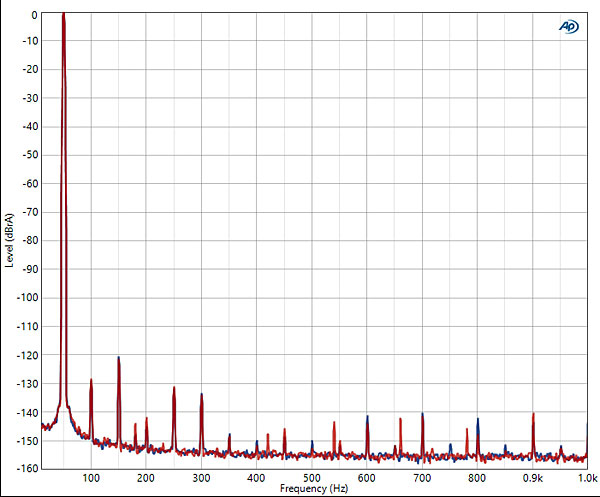
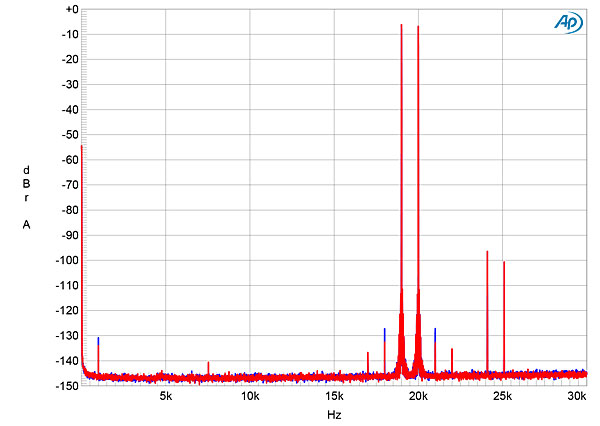
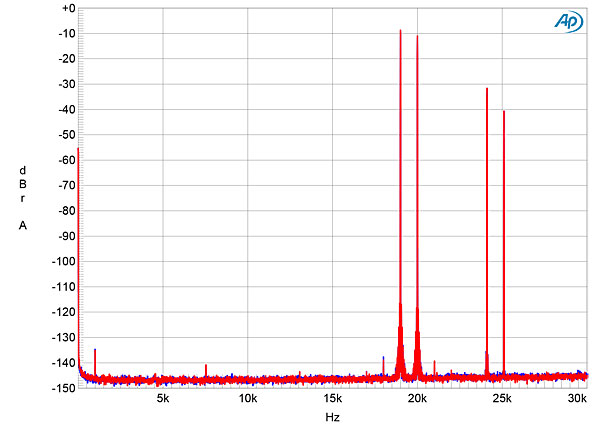
Only when I examined the dac8 Stereo's rejection of word-clock jitter via its AES/EBU and S/PDIF inputs did it stumble a little. Fig.19 shows the spectrum of the dac8 Stereo's output when it was fed high-level, optical 16-bit J-Test data; the S/PDIF and AES/EBU inputs are similar. All the odd-order harmonics of the undithered low-frequency, LSB-level squarewave lie at the correct levels, indicated by the sloping green line, but a cluster of power supply–related sidebands can be seen surrounding the high-level tone at one-quarter of the sample rate. These sidebands disappeared with USB data (fig.20).
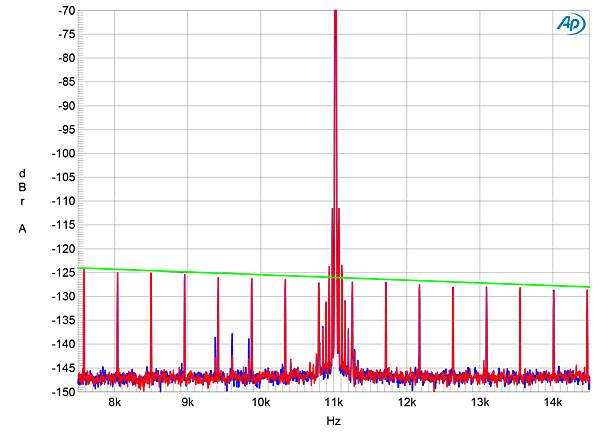
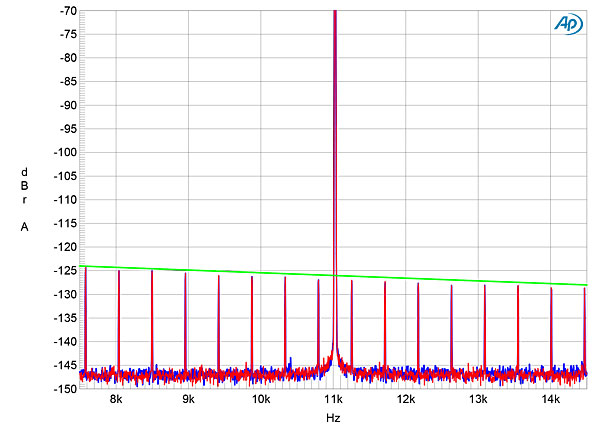
Okto's dac8 Stereo performed supremely well on the test bench.—John Atkinson

John you got the same measurements I did when I measured it last year which is good.
I have said this is the best DAC I have heard.

How does Chord Qutest sound compared to Oktos dac?

Hello John
Thank you for the review. What I glean from it is that the unit majors on detail retrieval, leading edge definition and resolution. You also mention that another more expensive DAC gets out of the way of the music more effectively - what does that mean exactly?
Also, any dac8 owners reading this: how would you describe the sound? Anything to add?

I haven't heard Okto dac8. But, as far as the measurements published in Stereophile are concerned - I think it's in the top 10, even the top 5 possibly. Rest assured, I'm ordering this.

Okto is definitely one of the best measured DACs at a fractional cost compared to other high-end brands.

When John Atkinson and ASR both agree that something is an extreme bargain I notice. It took me a year to find one on the resale market as the Okto site rarely has one posted for sale and they go almost immediately, like Stones tickets. Happily paid full retail price even though it's used. It should arrive here in a week or so. This should definitely up the digital side of my system. Thanks John.

Unable to purchase one directly from the manufacturer due to supply issues I managed to find a Pi-less version in mint condition online. Arrived yesterday. Simply stunning using HQPlayer playing my ripped flac files. Thanks John for your enthusiastic review. Now if only the manufacturer could find a way to figure out his production issues.

Have been listening to the Okto for about 6 weeks now. It's addicting - all the clarity and detail without any edge, images beautifully with the system it's in (which has B&W 702s2 speakers that I was only mildly happy with before). What I'd planned as a couple hours of trying headphones with the DAC last weekend turned into a day into night listening marathon. They are able to put out a few for purchase every couple weeks now, get on the email notification list. It's worth it.